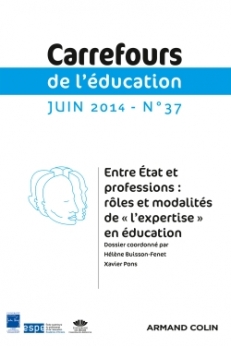
Carrefours de l'éducation n° 37 (1/2014)
Pour acheter ce numéro, contactez-nous
Recevez les numéros de l'année en cours et accédez à l'intégralité des articles en ligne.
La mise en place d’un Cadre Européen Commun de Référence en Langues (CECRL) pourrait illustrer, dans l’enseignement secondaire, l’émergence d’outils pédagogiques conçus à un niveau supranational, et susceptibles de participer à « l’européanisation » des politiques scolaires. L’article retrace la généalogie du CECRL en décrivant le rôle initial d’un groupe d’experts aux échelons-pilotes, puis il éclaire les conditions de l’intégration du Cadre dans le système éducatif national : non pas comme un point de convergence porté par le processus d’intégration européenne des politiques éducatives, mais comme un élément de solution d’un « problème » qu’il n’a pourtant pas pour vocation initiale de mettre en évidence - à savoir la faiblesse des élèves français en langues. Le CECRL s’agrège ainsi à d’autres outils déjà là, et la souplesse de ses usages facilite son adoption.
The establishment of a Common European Framework of Reference for Languages (CEFR) could illustrate in secondary schooling the emergence of pedagogical tools designed at a supranational level and susceptible of participating in the “Europeanisation” of school policies. This essay goes over the CEFR’s genesis, describing the initial role played by a group of experts during the elaboration and testing phase, and then clarifies the conditions allowing for its integration in the national education system: not as a convergence point sustained by the process pushing European integration ever further, but as an element in the solution to a problem it wasn’t supposed to bring to light initially, to wit the weakness of French students in languages. The CEFR will join a number of already available tools, and the ease of using it will facilitate its adoption.